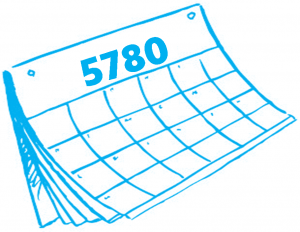Editors’ Note: In Judaism, the High Holidays are a time for prayer, family, and self-reflection. But how do these principles relate to our lives in USY? HaNer USY’s Noam Benson-Tilsen examines how we can take the lessons of the new year and apply them to our USY lives.
 Shana Tova, USY. This week we celebrated Rosh Hashanah, the new Jewish year, for the year 5780 (תש”פ). Well, actually, this is somewhat misleading: The Jewish calendar contains four new years, each serving a different logistical purpose. It is the same today in our society; we have many different “years”: the calendar year, the business or fiscal year, the school year, etc.
Shana Tova, USY. This week we celebrated Rosh Hashanah, the new Jewish year, for the year 5780 (תש”פ). Well, actually, this is somewhat misleading: The Jewish calendar contains four new years, each serving a different logistical purpose. It is the same today in our society; we have many different “years”: the calendar year, the business or fiscal year, the school year, etc.
Rosh Hashanah does not begin the first month of the Hebrew calendar. The first month, as in the Torah and throughout the majority of Jewish history, is Nissan. Rosh Ḥodesh Nissan, the first day of the month, marks the beginning of the calendar year for all purposes in the Torah—“[Nissan] shall be the first month of the year to you” (Exodus 12:2). It marks the Exodus from Egypt, at which point the Hebrews became an Israelite nation, according to tradition. Nissan also marked the beginning of a king’s reign in Israel, primarily for legal reasons; it also served various other purposes, such as marking the beginning of the period of rent for a house.
The second new year is the beginning of Elul, though this was just an arbitrary marker for the cattle tithe, which had to be made with cattle born in the same year, starting with 1 Elul. It also now marks the beginning of the season of the “Days of Awe” (Yamim Nora’im), when we come together in preparation for the High Holidays.
And now, the most familiar new year to us, Rosh Hashanah. As we know, the holiday of Rosh Hashanah begins on 1 Tishrei and continues to the next day, with the year beginning on the first day. It traditionally marks the mythological anniversary of the creation of the world, or possibly that of the creation of Adam and Eve. We hear this in the piyyut (liturgical poem) recited after blowing the shofar: היום הרת עולם (“Today is the birth of the world,” roughly). Rosh Hashanah also originally determined the beginning of the shemita (Sabbatical) year for land cultivation, during which no one was allowed to work the land. We now use Rosh Hashanah, along with Yom Kippur, as a period of reflection and self-improvement, to repent and move forward.
Finally, we have the 15th of Shevat (Tu BiShevat), the new year for trees. Fruit that was previously forbidden to eat becomes available on the third Tu BiShevat after the tree was planted; the date was chosen because this falls near the end of the rainy season, and most fruit is becoming ripe enough to pluck. Today, this “new year” is a time of celebration and of enjoying the first fruits of the season.
In the same way, USY has four “new years” each year; they come in the form of seasonal conventions. In March 1951, USY held its first “National Convention.” This marks the beginning of our existence as a movement, when we came together to form a national, and now international, Jewish youth group, in the same way that the Hebrews became a nation at the Exodus from Egypt. Each spring, regions around the continent hold a Spring Convention to elect and install new officers—marking the beginning of the “reign” of a new Executive Board.
Late in the summer, many regions hold Encampment, a time to come back together after a long time without programming, with many USYers off with other regions on summer programs, or doing their own summer activities. Right around the time of Elul, we reunite and prepare for the start of a new, exciting year of programming and fun.
Fall Convention/Kinnus or LTI/Fall Boards (varies by region), typically a month or so after the High Holidays, is a chance for the leaders of each region to come together and reflect on how to make the year the best they can for their region. Falling near the beginning of the year’s programming, this convention is a time to assess how you are doing and what you can do to improve yourself and your region for the year to come.
And finally, the Winter Conventions, including International Convention, are the conventions where we can relax, enjoy ourselves and those around us, and reap the fruits that USY has to offer.
The four Jewish or USY new years, each with corresponding ideals and goals, provide us with temporal markers to check in with reality, and to keep us aware of how much time has passed or how much is left in our USY experiences. Some people are just beginning their time in USY, and some are now in their last year. So at this time of year, we should reflect on what we can do to ensure the best year possible for our USY community locally, regionally, and internationally. We should take time to think about how we can move forward on all levels, to shape our movement in our image; and, to make this year a time of change and improvement.
לשנה טובה תכתבו ותחתמו
Leshana tova tikkateivu veteiḥateimu
May you be written and inscribed for a good year
Noam Benson-Tilsen
Noam Benson-Tilsen is a junior from HaNer USY. He is a proud member of BEKI USY in New Haven, Connecticut. He is currently serving as HaNer Religion/Education Vice President.